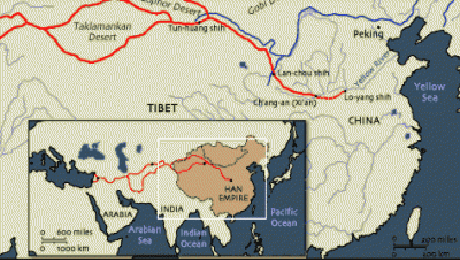China in the Central Asia: geopolitical problems grow

It is not accidental. China is championing the growth in all fields. In the meantime, it is undertaking bold programs in various parts of the world. Central Asia is especially prominent direction. In this context, the report by the International Crisis Group named "China`s Central Asia problem” (see: China`s Central Asia problem, www.crisisgroup.org, 27 February 2013) holds intriguing aspects.
Authors acknowledge that China has started to play a significant role in Central Asia in short time, but they emphasize that it might not suffice to tackle the outstanding challenges. China`s trade turnover with the countries of the region has reached 30 billion USD and this constitutes a milestone in securing China interests. Cooperation is mainly commodities and energy resources oriented. China also earmarks hundreds of millions of dollars for various aid and investment projects. The key objective is to ensure the security of its Xinjiang Uighur autonomous region.
The core issue is that Uigurs inhabiting that region share common ethnic, historical, social and cultural roots with the Turks of Central Asia, Caucasus and Anatolia. Changes are expected to occur in that region given the global geopolitical processes. Thus, it is by cooperating with Turkic nations that Beijing aims to thwart radical plans of Uigurs. Special emphasis is attached to bolstering bilateral relations with the Central Asian states.
However, there are two aspects to underscore. Countries of the region have interests of their own and their performance is inconsistent with Beijing`s script. Therefore, plans of the Chinese authorities are not fully realized. Secondly, other stakeholders in the region are obstructing China actions. Most serious rivals are the U.S. and Russia.
Regardless of support rendered by Moscow to China in number of global processes, Russia has vested interest in the Central Asia. Russia is aware that China holds greater financial resources. Differences are also manifested in their positions within the Shanghai Cooperation Organization. China aims to establish a financial institution in a region where its currency fails to be a dominant one. Moscow views this proposal as contradictory to its strategic geopolitical interests.
The U.S. is also troubled by certain aspects of China`s Central Asian activity. Economy, finances, transportation and energy resources are the prime concern. Beijing`s efforts were central in the construction of gas pipelines bound for the East. Those oil and gas pipelines are fully operational now. China is also major consumer of the Iranian gas. Therefore, Beijing poses serious rivalry to the U.S.
Moreover, China is spearheading application of advanced technologies in the region. Military dimension is the main focus. Although China`s efforts are no match to the U.S. and Russia, judging by the dynamics, its chances are not at all bleak. For example, fighter jets and space technology are the areas where Beijing has gained considerable achievements. Countries of the Central Asia face the immediate issue of combating terrorism; therefore provision of the army with modern military weaponry may produce more tangible results.
Another issue has to do with the abundance of cheap labor in China. The Chinese are employed in most of the countries of the region. Kazakhstan and Kyrgyzstan are the main recipients of the Chinese laborers. However, a certain disadvantage for China surfaces here. Resentment over the influx of the Chinese grows within the local population in Kazakhstan and Kyrgyzstan. Allegations of damaging the environment and disturbing demographic balance pave the way for contradictions.
According to International Crisis Group report, "In the event that Chinese economic expansion fails to benefit the masses and only contributes to enrichment of individual political clans Beijing is likely to face an obstacle” (see: Central Asia: Report Looks at China`s Role in Central Asia, www.eurasianet.org, 26 February, 2013) while one of the Chinese analysts expressed concern about viewing Central Asia as the "commodities source”.
Aforementioned only attests to the rising problems China is facing in that region. U.S. efforts to mount pressure upon China are further exacerbating the situation. So far, America has been more prominent in the Pacific. As China is increasingly involved in the Central Asia it inevitably confronts Russia on various issues of geopolitical nature. Thus, U.S. geopolitical pressure upon China in the Pacific adds drama to China`s relations with its ally, Russia, amounting to greater difficulties China has to encounter in Central Asia.
Along with positive impact of China`s rapid economic growth and technological development upon the relations with the Central Asian states it may rather have a negative effect. It is yet difficult to predict how China intends to tackle the outstanding geopolitical problems, but its rivalry with other stakeholders in the region is likely to be enduring.
Newtimes.az















































